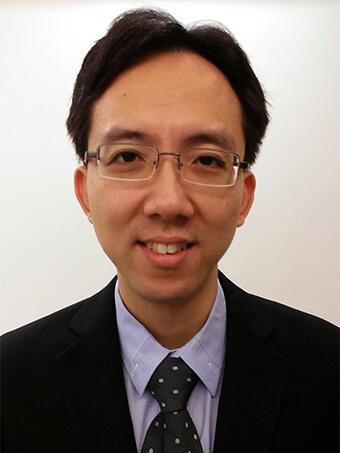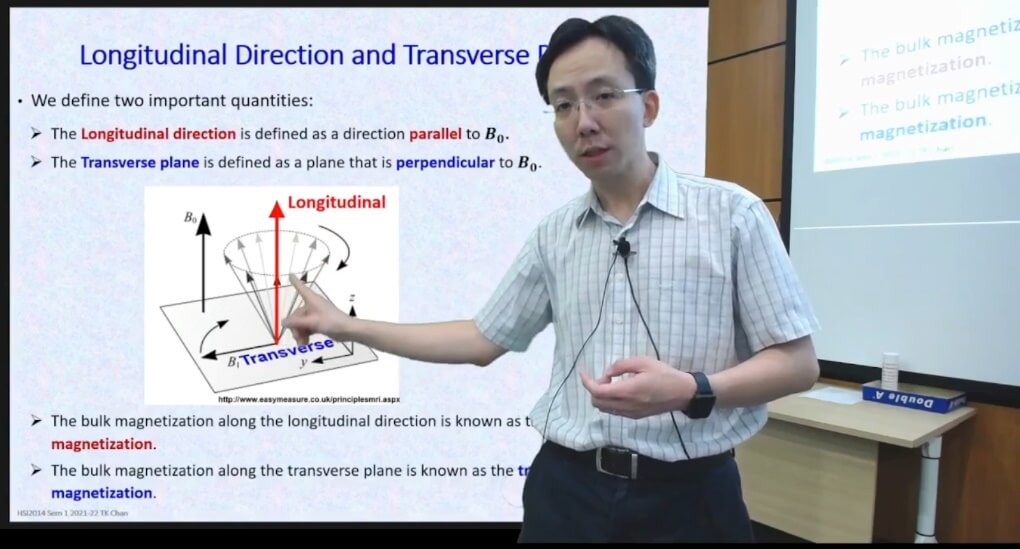
Email: phyctk@nus.edu.sg
Office: S12-03-16
Tel: +65 6516 4149
Current Research
My current teaching research involves digital chroma key compositing to improve the student learning experience over the online medium. This process involves a teacher conducting a lesson in front of a green screen, which is digitally removed and replaced with the lesson content (e.g. PowerPoint slides), so that the teacher is projected in front of the content in a format known as the weatherman style composite video. This can be implemented in real time at a lecture theatre, without the involvement of any camera crew or postproduction process. This mimics face-to-face learning in a classroom setting for students attending lectures remotely over the online medium, during online or hybrid lectures, synchronously or asynchronously.
Aggregate results of student surveys indicate that more than 80% of remote students perceived significant improvement in visibility of lecture delivery, teacher presence and capture of attention, while 91% of face-to-face respondents indicated that their in-person learning experience was not significantly affected. Categorical data analysis on itemised responses indicates that students who only adopted the remote learning mode have at least a 90% likelihood of moderately or strongly favouring the setup and implementation. Our results indicate strong evidence that our setup and implementation has significantly reduced the disparity in learning experiences.

Selected Publications
- T.K. Chan. “Implementing chroma key compositing with a green screen to improve the learning experience of remote students during synchronous hybrid lectures”. Education and Information Technologies. 29, 14687–14713 (2024)
- T.K. Chan. “Implementation of Green Screen/Chroma Key Technology During Online Lectures”. Asian Journal of the Scholarship of Teaching and Learning 11(2), 121 – 129 (2021)
- T. K. Chan. “Implementation and impact of authentic learning in a postgraduate applied physics course”. Asian Journal of the Scholarship of Teaching and Learning 10(2), 153 – 170 (2020)
- T.K. Chan, S.Y. Koh, V. Fang, A. Markwitz, T. Osipowicz, “Loss of implanted heavy elements during annealing of ultra-shallow ion-implanted silicon: the complete picture” Applied Surface Science 314, 322 – 330 (2014)
- S. Mathew, A. Annadi, T.K. Chan, T.C. Asmara, D. Zhan, X.R. Wang, S. Azimi, Z. Shen, A. Rusydi, Ariando, M.B.H. Breese and T. Venkatesan “Tuning the Interface Conductivity of LaAlO3 / SrTiO3 Using Ion Beams: Implications for Patterning” ACS Nano 7, 10572–10581 (2013)
- S. Mathew, K. Gopinadhan, T. K. Chan, X. J. Yu, D. Zhan, L. Cao, A. Rusydi, M. B. H. Breese,S. Dhar, Z. X. Shen, T. Venkatesan and John T. L. Thong “Magnetism in MoS2 induced by proton irradiation” Applied Physics Letters 101,102103 (2012)
- T.K. Chan, F. Fang, A. Markwitz and T. Osipowicz, “Solid phase epitaxy of ultra-shallow Sn implanted Si observed using high-resolution Rutherford backscattering spectrometry” Applied Physics Letters 101, 081602 (2012)
